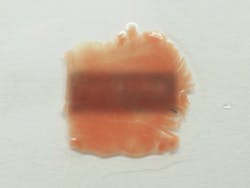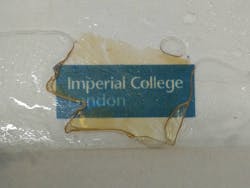Researchers apply optical clearing to reveal hidden complexities of heart tissue
Using an existing approach to see through brain tissue, a team of researchers at Imperial College London (England) has been able to turn samples of heart tissue transparent, revealing the complex networks of tiny blood vessels that supply the tissue, as well as the scaffold of collagen (the protein that enables skin and tendons to stretch) that holds everything in place. The researchers believe the approach could potentially be used in the clinic to help patients with heart disease by showing the spread of stiff scar tissue, or to show if patients are responding to treatments.
Related: Commercialization will advance tissue clearing
As heart tissue is so packed with muscle cells, blood vessels, nerves and collagen, it can be hard for current laser-based imaging techniques to penetrate deep enough into samples—as the light becomes increasingly scattered. Scientists get around this problem by cutting tissue samples into thin layers and imaging them individually, which is technically challenging, time-consuming, and effectively renders a 3D structure as a series of flat slices.
So, the research team used a technique called optical clearing to image adult heart tissue in 3D. By using solvents to dissolve fats locked up in cell membranes, they were able to reduce the density of the tissue and the amount of light scattering. The result is a sample of tissue transparent enough to read text through, which reveals the intricate branching of blood vessels that keep the tissue alive and the criss-crossing collagen scaffold.
"With more sophisticated methods, we can achieve 50–80 µm, but we were never able to image a whole myocardial slice," says Filippo Perbellini, first author of the paper describing the work, in which the researchers applied the method to both canine and human heart tissue. "We have used an existing method for preparing samples of brain tissue, but what's new here is that we have adapted it for the heart and been able to visualize samples of around 300 µm thick."During the course of heart disease, the structure of the heart changes, with more connective collagen being laid down, reducing the tissue's ability to stretch and flex and making the heart work harder. The researchers say that by taking regular biopsies of cardiac tissue from the patient's heart and making them transparent, doctors could show how the structure of the tissue is changing and follow the course of disease more accurately. The approach could also be used to show if drugs that target this fibrosis of the heart are working by looking at changes in the structure of tissue before and after treatment.
"We have used a sample taken from human heart during heart transplantation, but we could do the same with tissue from a biopsy from a patient," says Cesare Terracciano from the National Heart and Lung Institute at Imperial College London, who led the research. "As a diagnostic tool, it would be able to us tell how fibrotic the tissue is, showing the changes in structure of a failing human heart and how this disrupts it from beating as the heart becomes less elastic."
Currently, the approach takes a few minutes to turn the sample translucent and works on tissue samples up to around 300 µm in thickness—but future studies will work to refine the technique. The researchers say that while the tissue shrinks slightly in size after samples are prepared and made transparent, the structure remains intact. However, they note that as the solution used is toxic and causes important changes to cell membranes, it is highly unlikely that the approach could be applied to living tissue immediately.
Full details of the work appear in the journal Scientific Reports.

